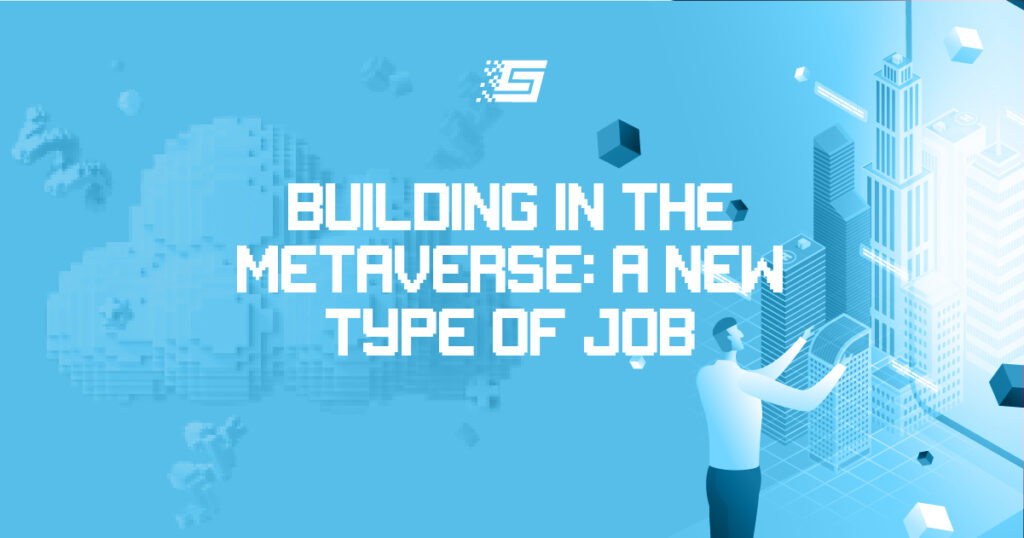4 Metaverse Myths Explained
The Metaverse was a blossoming concept much before Facebook rebranded itself to Meta. But this purely cosmetic move of the social media giant sent people scouring the internet to understand this latest buzzword. The video released shortly after the announcement was made, featuring Mark Zuckerberg in a hyper-realistic 3D virtual environment, created a wave of excitement but also led to a few misconceptions surfacing.
In this article, I plan to address some of those myths that may be stalling your entry into the metaverse. While there may be many doing their rounds on the internet right now, I will be focusing on the following four major ones:
Myth 1: Metaverse Will Take Years to Arrive
The Metaverse is actually not a new concept! It has always existed in one form or the other for quite a long time now. To mention the most popular one: Minecraft, a video game owned by Microsoft which was released back in 2011 is an open platform that allowed players to access and build anything they want.
An NFT boom happened around February 2021, which, by the way, is still going on. Consequently, the space saw a lot of NFT projects spawn, promising their very own metaverses. Many of them failed. But the ones that survived and existed even before the NFT boom have either released functioning versions of their metaverses or are nearing release.
Here is a quick recap of what’s happening with some of the biggest names in the metaverse space. Bored Ape Yacht Club (BAYC) recently released a sneak peek video of their metaverse in the works. Illuvium did that a couple of months back, and Decentraland is open for brands to build their stores in the metaverse. But, the real metaverse is where the users can build whatever they want to use in it.
The Sandbox has succeeded in that game. It’s a metaverse/virtual world that’s built using voxels or 3D pixels. You don’t need to have complex 3D modeling skills to build assets you want to use or sell in the Sandbox metaverse. The alpha version of the game is out, and two seasons that spanned about a month each, featuring various experiences created by metaverse companies and solo game builders are over. As you can see, the metaverse is here! And more are on the way.
Myth 2: You Can’t Earn Money in the Metaverse
Have you seen Steven Spielberg’s Ready Player One? That’s where we are heading. Experts believe that every person on earth will have a virtual self in the metaverse. It’s impractical and almost impossible to create digital assets for everyone in the metaverse according to their needs. So, the best way to go about it is to let the users create what they want.
The Sandbox Game I mentioned earlier will let users do exactly that. You will be able to create and sell voxel assets in the marketplace or use them on your own metaverse land. But that isn’t the only way to make money in the metaverse. You can buy lands in metaverses like The Sandbox and Decentraland and set up shops there. Your brand that once only had a local presence could now go global through the metaverse.
You must have heard about the play-to-earn (P2E) phenomenon. If you are a gamer or a content creator, P2E offers an additional income source apart from earnings from YouTube and Twitch. The P2E space is going to blow up, and here is a good example: The Sandbox Game distributed over 10 million $SAND tokens to the players within one month. Money making opportunities will only be limited by your imagination in the metaverse.
Myth 3: You Need Expensive Equipment to Enter the Metaverse
Zuckerberg’s hour-long video explaining Meta’s ambitions probably gave you the idea that you might need expensive VR headsets and computers to enter the metaverse. Such a demanding metaverse doesn’t exist yet, but metaverse companies are aiming to make the metaverse accessible to all. A popular metaverse, Decentraland, will run on your web browser, while The Sandbox Game requires a mid-range PC to run smoothly.
Smartphone compatibility is also on the roadmaps of some metaverse giants. What if the metaverse in Zuckerberg’s video launches early, and you want to experience it in the optimal quality possible? There will always be a solution. Here is the proof: A company named The Abstract VR is building virtual cloud PCs with the highest gaming specifications to offer virtual experiences to anyone who can’t afford expensive setups.
Ubisoft will be presenting the VR escape rooms they develop through The Abstract VR, and their Web3 ecosystem is powered by EverGrow Coin. This space is new and we will be seeing more projects like The Abstract VR in the near future.
Myth 4: NFTs only serve their purpose in the metaverse
NFTs and the metaverse have a synergetic relationship. That’s because the digital assets that are available for purchase to use in the metaverse are sold as NFTs. But, NFTs are much more than that. They could be your pass to enjoy real-life utilities like holders’ parties, discounted merch, conferences, and many more. Food and clothing giants have also entered the metaverse. It should go without saying that the holders of their digital assets NFTs would also enjoy some IRL utilities.
Gary Vee’s NFT restaurant, Starbucks’ NFT initiative, Samsung’s flagship 837 store in Decentraland, etc., are all hinting at potential real-life utilities and benefits for NFT holders and early adopters. If none of this has caught your attention, you could just invest in NFT projects that demonstrate potential and flip them for a profit. It can then be cashed out from an exchange.
Conclusion
The metaverse is the future of the internet, and you are still early. It’s imperative to understand that the metaverse is transforming how brands and customers interact. Those who get in early will be well informed and way ahead of others by the time this craze becomes too tempting for anyone to neglect. Your business, work life and personal life will be impacted positively by this revolution. Share this knowledge and spread the word. Let’s get this party started!
Author: Arun F Xaviour


